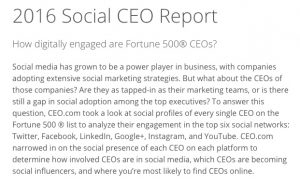Can data drive a marketing campaign and still keep it creative? Yes, provided you bridge the divide between art and science by benefiting both sides. Paul Gillin and I examine a recent article in Marketoonist that discusses this issue. Blogger Tom Fishburne quotes an agency head who heard a principal from another agency say, “Data drives every piece of creative we put out today.” The agency chief’s reaction: “Boy, your creative must really suck.” When marketers stray from being data-driven to being data-blinded, campaigns fall flat.
One piece worth reviewing about this appeared on one of the Google blogs last year. Google, DoubleClick and an ad agency collaborated to explore how to best do data-driven campaigns, and came up with three suggestions:
- Know all the sources of data available, and figure out which can fuel smarter creative.
- Bring in the agency at the start of a project and talk about what data makes the most sense before any creative program is designed.
- Collaborate and communicate to the extreme.
Fishburne cites an example of a creative video campaign for the state of Tennessee that struck the right balance. Data was used to determine what versions of pre-roll ads to display, with the creative being designed to evoke an emotional response.
Speaking of creative, Amazon has unleashed a slew of actions by various cities around North America in its response to its quest find a site for its second headquarters. Tucson delivered a 21-foot Sagauro cactus, while Kansas City posted creative product ratings on Amazon’s own site to explain its advantages. Some mayors have put together their own wacky YouTube pitch videos. This is every bit a B2B campaign, although not one most marketers can relate to very closely. What we like about it is that Amazon didn’t state the rules too clearly, leaving a lot of room for bidder interpretation. That led to greater creativity. We can’t wait to see who wins (hope it’s St. Louis or Boston).
You can listen to our 16 min. podcast here:

 This week Paul Gillin and I talk to Crowded Ocean’s partners
This week Paul Gillin and I talk to Crowded Ocean’s partners  Instead, Carol and Tom suggest that you examine more closely the different component skills that make up marketing, and staff accordingly. These include product management, corporate marketing, product marketing and IT fluency. The evolved CMO has the backbone of the marketing department, the breadth and understanding of the customer experience and the depth of a new key organizational growth pillar that shapes their point of view. Our guests suggest that the initial full-time marketing insider should be someone that they call “Seth” who is a 28-year-old numbers jockey who can give their sales organization demand generation data.
Instead, Carol and Tom suggest that you examine more closely the different component skills that make up marketing, and staff accordingly. These include product management, corporate marketing, product marketing and IT fluency. The evolved CMO has the backbone of the marketing department, the breadth and understanding of the customer experience and the depth of a new key organizational growth pillar that shapes their point of view. Our guests suggest that the initial full-time marketing insider should be someone that they call “Seth” who is a 28-year-old numbers jockey who can give their sales organization demand generation data.
 Paul Gillin and I talk to
Paul Gillin and I talk to 
 This week Paul Gillin and I are guests on Shel Holtz’ For Immediate Release podcast. We talk about these topics:
This week Paul Gillin and I are guests on Shel Holtz’ For Immediate Release podcast. We talk about these topics: